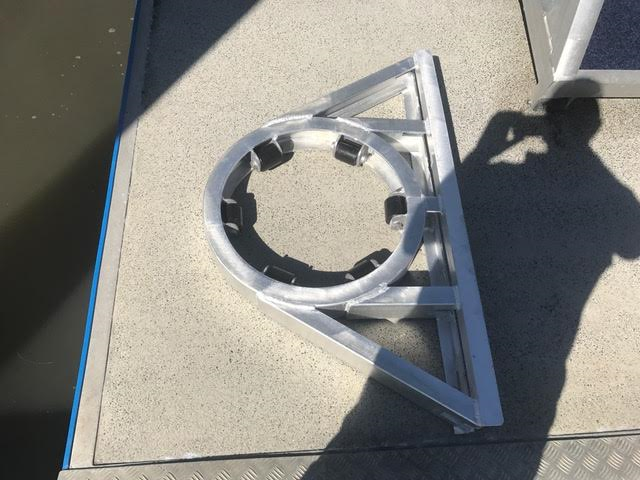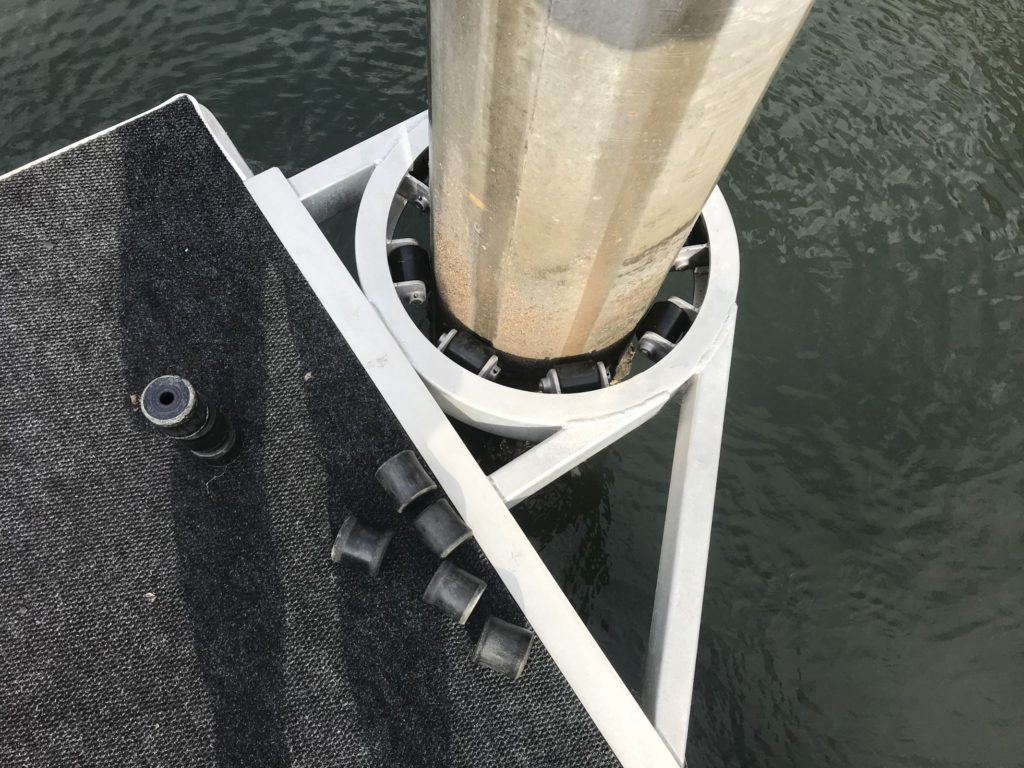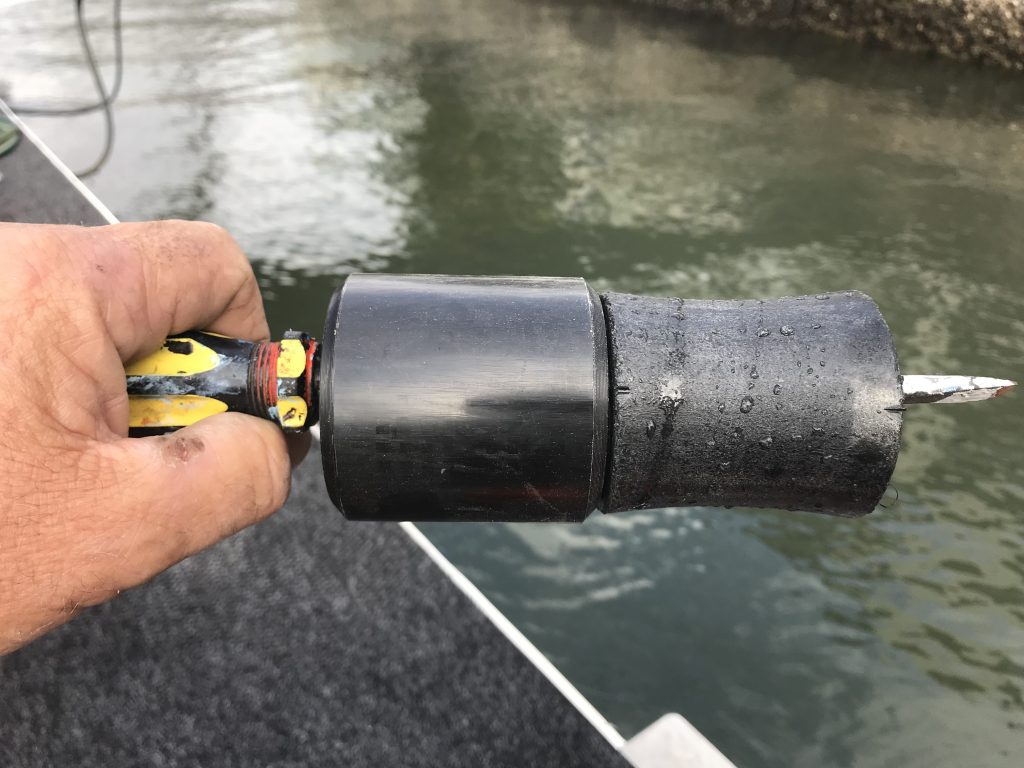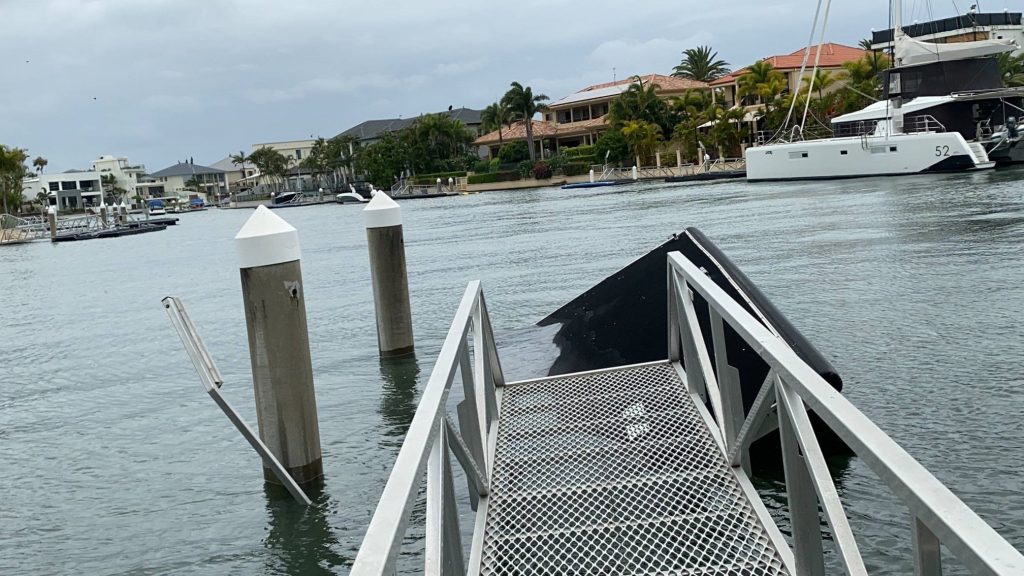
If you’re considering investing in a pontoon floating dock, then know you’re making the right choice. Pontoons are undoubtedly the best-floating dock system for Gold Coast and Sunshine Coast waterways; they’re robust, flexible, and offer low maintenance requirements, much more so than their jetty counterparts.
One of the most common types of pontoons is a piled pontoon – those that utilise piles to hold the pontoon in a fixed location. Now, I said fixed, but that isn’t 100% accurate. The beauty of investing in a pontoon floating dock over a jetty is, while they are fixed in a horizontal hold, they are not fixed vertically. Meaning pontoons cannot move left, right, forward, or backward, but they can move up and down.
It is this up-and-down motion that enables pontoons to withstand storms better than fixed jetties. Moreso, they are designed to adjust to the changing tides.
Today, we look at piled pontoons under a microscope, focusing on pile brackets. I’ll explain what they are, their role in the pontoon constructions, and the importance of maintaining them.
What is a Pile Bracket?
A pile bracket is a specially designed bracket that connects a floating dock to a pile. They feature rollers that enable the dock to move up and down the piles freely while the pontoon floats in position through various tide heights.
Below is an aerial image looking down on a pile bracket and pile.

You can’t quite see in the image above, but the pile bracket is bolted to the dock and surrounds the pile. The bracket is made from aluminium and is, therefore, ideal for marine environments. Attached to the bracket are eight Magdalene nylon rollers.
Why pile brackets are important
Pile brackets are an essential element in the construction of a piled pontoon. Without the brackets, the dock has nothing to fix it in place. The functionality they provide is essentially what differentiates a pontoon from a fixed jetty.
The most important element of a pile bracket is perhaps its rollers. It is the rollers that enable a pontoon to move up and down the pile as the tide changes. However, due to their constant movement with the water, rollers do wear over time.
Below is an image that demonstrates the wear pattern of a worn-out roller. On the left, you see a new roller. On the right is a worn roller that needs replacing.

Why you need to maintain pile brackets
The vital function that pile brackets play in the construction of a pontoon means they need to be functional at all times.
Damage to a bracket or its rollers will undoubtedly disrupt the operation of the pontoon – brackets may need re-welding, and rollers occasionally need replacing.
Pile brackets and rollers should have a visual inspection at least once a month for signs of strain and wear. Moreover, the piles themselves also need to be inspected.
Barnacle buildup on piles is of the leading causes for bracket or roller damage. Take a look at the image below – this is the catastrophic result of barnacle buildup on piles. The rollers are unable to glide the pontoon to the height of the tide, resulting in significant damage that could have easily been avoided.

Therefore, inspecting the piles and clearing any buildup before damage occurs is just as important for the longevity of your pile brackets. However, if you do need to replace them, our article, How to Replace Broken Pile Brackets on a Pontoon Dock, will be helpful.
Conclusion
If you’re considering investing in a piled pontoon, then you’ll need to understand what pile brackets are, their function, and why it’s so important that they are properly maintained.
Piled brackets connect a pontoon floating dock to the pile. They enable a pontoon to move freely with the tide and are vital in a pontoon’s operation. They do, however, wear with use and will need to be inspected regularly and repaired if damage or wear has occurred.
For all your pontoon maintenance and repair requirements, keep Micks Marine Maintenance in mind.
Click here to learn more about pile brackets and here to learn more about finding replacement parts.